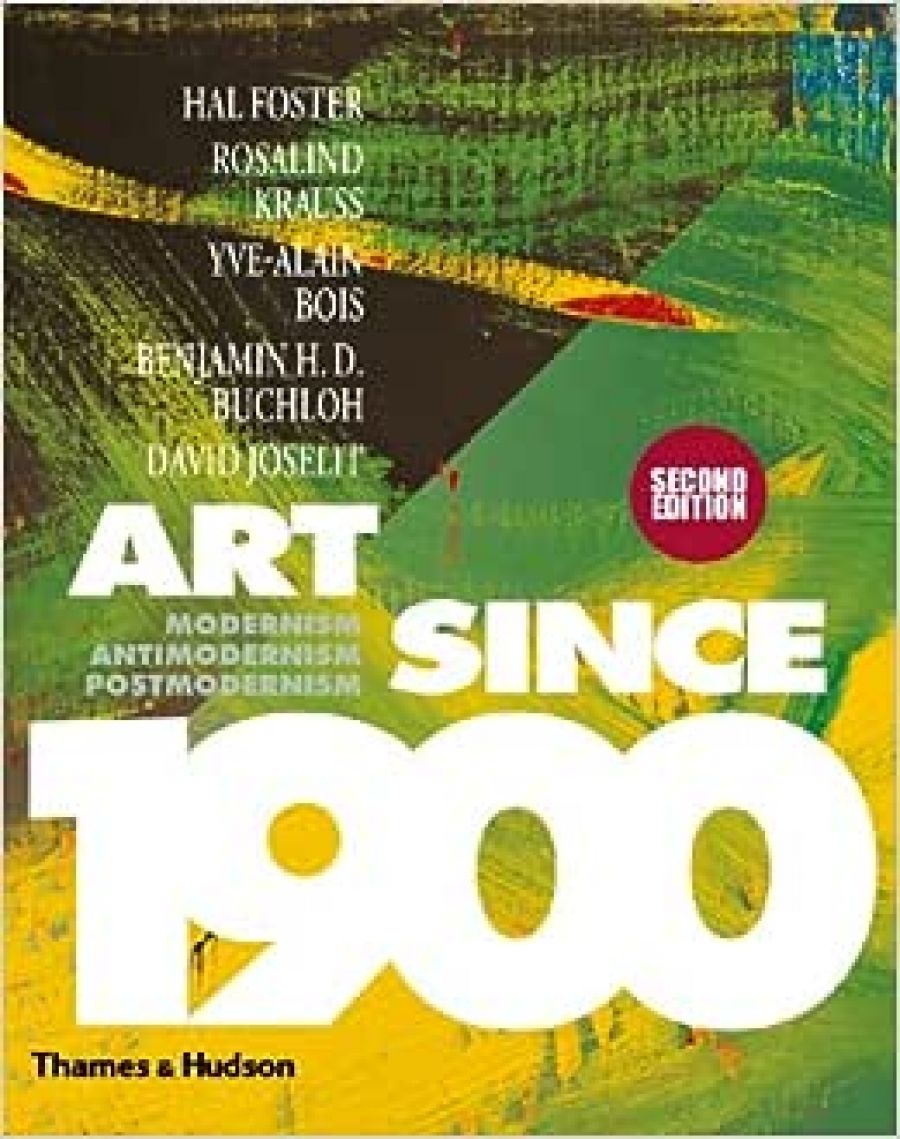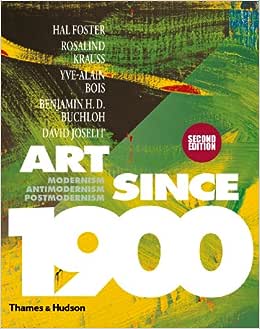
- Free Article: No
- Contents Category: Art
- Review Article: Yes
- Article Title: Ex cathedra
- Online Only: No
- Custom Highlight Text:
Art Since 1900: Modernism, Antimodernism, Postmodernism manages to be simultaneously comprehensive yet skewed, innovative yet inert, and pluralistic yet doctrinaire. As a theoretically sophisticated rewriting of modern art from 1900 to 2003, it is a major achievement and will surely be of central importance in the field for years to come. Its authors are among the leading art historians of their generation and have often worked together. They are perhaps best known for their ground-breaking work in the pages of October, the US journal of art and theory, which was founded by Rosalind Krauss, among others. They have also often collaborated on other projects such as Formless: A User’s Guide (1997), by Krauss and Yve-Alain Bois. It is probably not overstating the case to say that together Hal Foster, Krauss, Bois and Benjamin Buchloh have had as significant an impact on the discipline of art history as Aby Warburg, Erwin Panofsky and Ernst Gombrich had earlier in the century.
- Book 1 Title: Art Since 1900
- Book 1 Subtitle: Modernism, Antimodernism, Postmodernism
- Book 1 Biblio: Thames & Hudson, $125 hb, 704 pp
- Book 1 Cover Small (400 x 600):

It does mean, however, that Art Since 1900 is a kind of extension of the October project, whatever the authors themselves may have said to the contrary. Theory is given as much importance as art. It follows that for them the most notable events of 1984, for example, were Victor Burgin’s lecture on ‘The Absence of Presence: Conceptualism and Post-Modernisms’ and the publication of Fredric Jameson’s Postmodernism, or the Cultural Logic of Late Capitalism. Nothing much happened in 1985, but in 1986 the major event was Endgame: Reference and Simulation in Recent Painting and Sculpture, an exhibition curated by none other than Bois. Presumably, if the authors had concluded their history in 2005 rather than 2003, the publication of Art Since 1900 would have been the most significant event of that year.
Again, this healthy, or narcissistic – depending on your point of view – self-regard may not in itself matter. After all, self-promotion is vital to survival in North American academia (and may soon be more blatant in this country with the federal government’s introduction of the Research Quality Framework next year). Yet their book does seem to have been meant as textbook rather than a gospel or diktat, notwithstanding occasional appearances to the contrary. On that level, its usefulness is debatable. One wonders how much sense the following sentence would make to the average undergraduate student: ‘Like Mallarmé’s mutational play, where nothing is ever just one thing – as when signifiers divide, doubling “son or” (his or her gold) with “son or” (the sound “or” and by implication the sonority of poetry) – Picasso’s signs mutate visually by folding over onto one another to produce the oppositional pair of the paradigm.’
The authors make an effort to reduce the potential difficulties of readers unversed in the terminology of semiotics and other theoretical discourses by including a useful glossary of terms at the back, though the emphasis is unabashedly on concepts from critical theory rather than art history, conventionally defined. They have also written four theoretical introductions in which they describe their respective methodological approaches: psychoanalysis, social history of art, formalism and structuralism, and poststructuralism and deconstruction. For some reason, these introductions are unsigned, although anyone familiar with their work will recognise Foster as the author of the first introduction, Buchloh of the second, Bois of the third, and Krauss of the fourth. All of this is interesting and valuable in its own right, but it does draw attention to the conflict within the book between its apparent aspirations as a textbook and the theoretical density of the authors’ writing. Art Since 1900 may have actually been more comfortable under the October imprint than that of Thames & Hudson, despite the latter’s admirable support of the project.
The book is also firmly focused on Euro-American art. There is a desultory ‘box’ on Aboriginal art, written by Foster, but little other acknowledgment of modern art from this part of the world. For all its innovations of interpretation and layout – the book makes use of a kind of equivalent of ‘hyperlinks’, allowing the reader to follow his or her own path through the pages – the narrative remains the familiar one of successive centres and dimly perceived margins.
An art history of the twentieth century that makes a serious attempt to expand the canon is long overdue. In Australasia, the consistently innovative yet idiosyncratic work of Colin McCahon (who is not mentioned in Art Since 1900) is a case in point. Over the last few years, a number of prominent European and American curators and art historians have periodically expressed their admiration for McCahon’s unique contribution to modern art. In the catalogue of the recent exhibition Colin McCahon: A Question of Faith (2002), the curator Marja Bloem and the then-director of the Stedelijk Museum Rudi Fuchs went so far as to claim: ‘We were convinced that McCahon as an inventor and visionary should be seen on the same level as Jackson Pollock … or Joseph Beuys. If we could bring about such a change, the history of modern art would be richer, more varied, and interesting than it is now.’ They are absolutely right. On the evidence of Art Since 1900, however, that enriched history still seems a long way off.


Comments powered by CComment